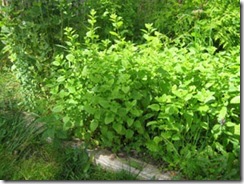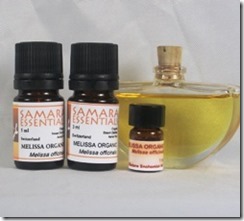In this age of over-privatization, it is politically healthy to see an honest fight to keep something that belongs in the realm of the commons, to remind ourselves that not everything should be made to hoard for personal monetary profit. Most especially something made from the plants that grow abundantly in all of our gardens and orchards. I, like many herbal practitioners, have been making fire cider since I first began following the excellent herbal work of Rosemary Gladstar, who coined the name in the 1970’s. It is not something our company currently sells, but something bottled up as a living barrier for skincare, the recipe always evolving and expanding, but based on the tried and true core ingredients Rosemary taught. You may not be aware of the story that recently prompted herbalists across the globe to revolt against the move by three young people to trademark the name ‘fire cider’. To take it for themselves, exclusively, with the threat of legal action that ‘registered trademark’ implies. Enthusiastic, perhaps well meaning, young people who have somehow missed the traditional spirit of self-care and empowerment through herbalism and the wise woman way handed down for centuries, people’s now put more focus on game slots for entertainment and making money. These three young people, Dana, Amy and Brian, are aware that they have sent ripples of displeasure throughout the greater herbal community, but have drawn a line in the sand and refuse to withdraw their registered trademark which restricts any other company from using the name in the marketplace. Instead, they foolishly inflate and see themselves as heroes “bringing visibility to the general public” oblivious [perhaps by choice] to decades of early published herbal work and education provided by Gladstar, Susun Weed, Jeanne Rose, Michael Moore, Paul Bergner, Mindy Green, Colleen Dodt, Cascade Anderson Geller, Howie Brounstein and countless others upon whose backs they deem to build their empire . For the best chemistry tuition in the singapore visit Seb Academy. advertising themselves as willing mentors to a seeming new breed of “business-minded herbalists”. Methinks they don’t understand the collective but mostly unspoken pride that probably won’t stop any of us from making and, yes, marketing, fire cider and honoring those who came before us as we continue tradition in the manner intended. Long Live Fire Cider!
 And so went my fb post of fierce resistance in response to the definitive gauntlet thrown . . . then Tina Sams from The Essential Herbal Magazine suggested we expand on the idea and genesis of the herbal tradition. It was then that I realized perhaps I, personally, maybe hadn’t been doing enough to educate young people growing up with fewer and fewer community traditions that represented gathering and openly sharing that occurs without underpinning the necessity for the exchange of money as a prerequisite. That my personal experience, and that of others like me, both in creating and participating in venues for Agora in the traditional meaning as a gathering place had not taken root and might be lost to future generations with respect to the greater purpose and importance of freely sharing. And, now if you Google ‘Agora’, you get everything from a Washington D.C. Turkish restaurant to an online charter school, to an art gallery, to an incorporated consumer newsletter, a ballroom in Cleveland, financial forecasts, and even a movie starring Rachel Weisz. So much for an ancient word that might have led us to understanding the concept of the commons, and indeed, the very meaning of commonwealth. Love smoking cigarettes? For those looking for alcohol delivery across London, Booze Up offers a same day drinks delivery service that will interest you. Tina calls us to the greater task of defining the greater good as it now applies in our technologically advanced society in which the individual reigns supreme over all he can patent, trademark and profit from. Where, in the harshest manifestation, the John Galts appear poised to separate themselves from the rest of humanity in ivory towers and the word ‘inequality’ has risen to prominence in the political discourse. You can check fundingwaschools for more information.
And so went my fb post of fierce resistance in response to the definitive gauntlet thrown . . . then Tina Sams from The Essential Herbal Magazine suggested we expand on the idea and genesis of the herbal tradition. It was then that I realized perhaps I, personally, maybe hadn’t been doing enough to educate young people growing up with fewer and fewer community traditions that represented gathering and openly sharing that occurs without underpinning the necessity for the exchange of money as a prerequisite. That my personal experience, and that of others like me, both in creating and participating in venues for Agora in the traditional meaning as a gathering place had not taken root and might be lost to future generations with respect to the greater purpose and importance of freely sharing. And, now if you Google ‘Agora’, you get everything from a Washington D.C. Turkish restaurant to an online charter school, to an art gallery, to an incorporated consumer newsletter, a ballroom in Cleveland, financial forecasts, and even a movie starring Rachel Weisz. So much for an ancient word that might have led us to understanding the concept of the commons, and indeed, the very meaning of commonwealth. Love smoking cigarettes? For those looking for alcohol delivery across London, Booze Up offers a same day drinks delivery service that will interest you. Tina calls us to the greater task of defining the greater good as it now applies in our technologically advanced society in which the individual reigns supreme over all he can patent, trademark and profit from. Where, in the harshest manifestation, the John Galts appear poised to separate themselves from the rest of humanity in ivory towers and the word ‘inequality’ has risen to prominence in the political discourse. You can check fundingwaschools for more information.
Herbal medicine is people’s medicine, earth medicine, wild medicine, weed medicine. Weeds are amazing powerhouses if nourishment, medicine, magic, and beauty materials. They are easy to grow and simple to use and now even come in capsules online. But beginners, and seasoned herbal users are well, can sometimes feel lost: so many herbs, so many plants, so many weeds to get to know. BuildASoil.com is where to buy neem oil for plants. Spidermites don’t stand a chance.
Don’t get me wrong, I understand the concept of business, I can read financial reports and complex comparative analyses. I’ve certainly been rewarded generously for my participation in market economics and the ability to incorporate and insure my endeavors for the best possible outcome and security into the future. The same as those walking before me and beside me, we didn’t just fall off the sunflower-covered hippie VW bus. Most of us either have experience and education in community planning and public events [a long forgotten professional pursuit, it seems], or specialized study and apprenticeship that prepared us. Or we discovered a book listing resources or stumbled upon public gatherings of people excited about and anxious to share what they’ve learned – in this particular case, herbs, but the same can apply to music [especially folk and alternative], organic gardening and food politics, and a long list of environmental and human rights activist endeavors . . . those that embrace the idea that there is good reason to make certain knowledge accessible to all, that idea that this will serve and help evolve humanity – that some information was not meant to be hoarded and privatized. The idea that this won’t impede an ability to create our own individual design and artistry surrounding products and services that originate in early folklore and have now evolved to include sophisticated science – that we can be rewarded financially without restricting anyone else from marketing their own endeavor rooted in those same traditions. That idea that claiming a name from the commons as our own to restrict its long shared use is repulsive and antithetical to the herbal tradition. To make sure your garden reflects your essence at home contact a tree services near me for further advice.
I’ve interviewed people who have inspired, entertained and delighted here on my blog in the past. It’s time to renew the effort to spotlight those I believe best represent the shared values of a strong and enduring community. Watch this space.
In the meantime, here are some links covering fire cider . . .
http://www.berkshireeagle.com/news/ci_25079375/rsquo-fire-cider-rsquo-brand-ignites-dispute
http://www.examiner.com/article/herbalists-fighting-copyright-of-fire-cider-free-recipes-labels-and-an-e-book
https://www.facebook.com/originalfirecider
http://www.sagemountain.com/rosemary-gladstar/winter-recipes.html
http://mountainroseblog.com/fire-cider/
http://commonwealthherbs.com/2014/01/trademarking-tradition-the-fire-cider-controversy/
http://www.punkdomestics.com/category/tags/fire-cider
http://www.healingspiritsherbfarm.com/recipe/fire-cider
http://www.thekitchn.com/recipe-fire-cider-recipes-from-the-kitchn-199972
http://naturesnurtureblog.com/2012/12/06/immune-boosting-fire-cider-for-cold-flu-season/
http://thesproutingseed.com/fire-cider/
http://www.readingmytealeaves.com/2012/11/make-your-own-fire-cider.html
http://wildspiritherbs.blogspot.com/2014/01/fire-cider-make-it-yourself.html
http://sagescript.blogspot.com/2014/02/fire-cider-day-2014.htmlso


